
EUROPE: Rail Baltica project promoter RB Rail has produced conceptual images to help inform the public about the type of trains which could link Estonia, Latvia and Lithuania with Poland and western Europe using the future standard gauge line.
The concepts are intended to inform the public about the features of modern high speed trains, and are purely illustrative without prejudice to the future choice of rolling stock; RB Rail said it aims to provide infrastructure for as many different operators and trains as possible.
Inform and educate
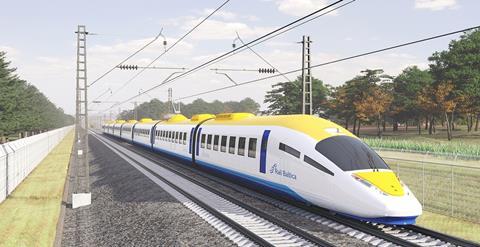
‘Only 37% of people in Estonia and Latvia and 27% in Lithuania have travelled by high speed train, according to a survey which was carried out across the Baltic countries at the end of 2020’, said RB Rail management board Chair & CEO Agnis Driksna on April 22.
‘This requires us to even more actively inform and educate society about personal, environmental and economic benefits that the high speed train would give to people of our region, including its overall positive impact and experience one can get when travelling by a high-speed train.’
Design concept
RB Rail said the concept train was inspired by trainsets in operation in Europe and elsewhere, with styling influenced by the Baltic Sea and its sun and sand.
‘We have designed the train according to the latest ergonomic and comfort standards’, said Jean-Marc Bedmar, RB Rail Head of Systems & Operation.
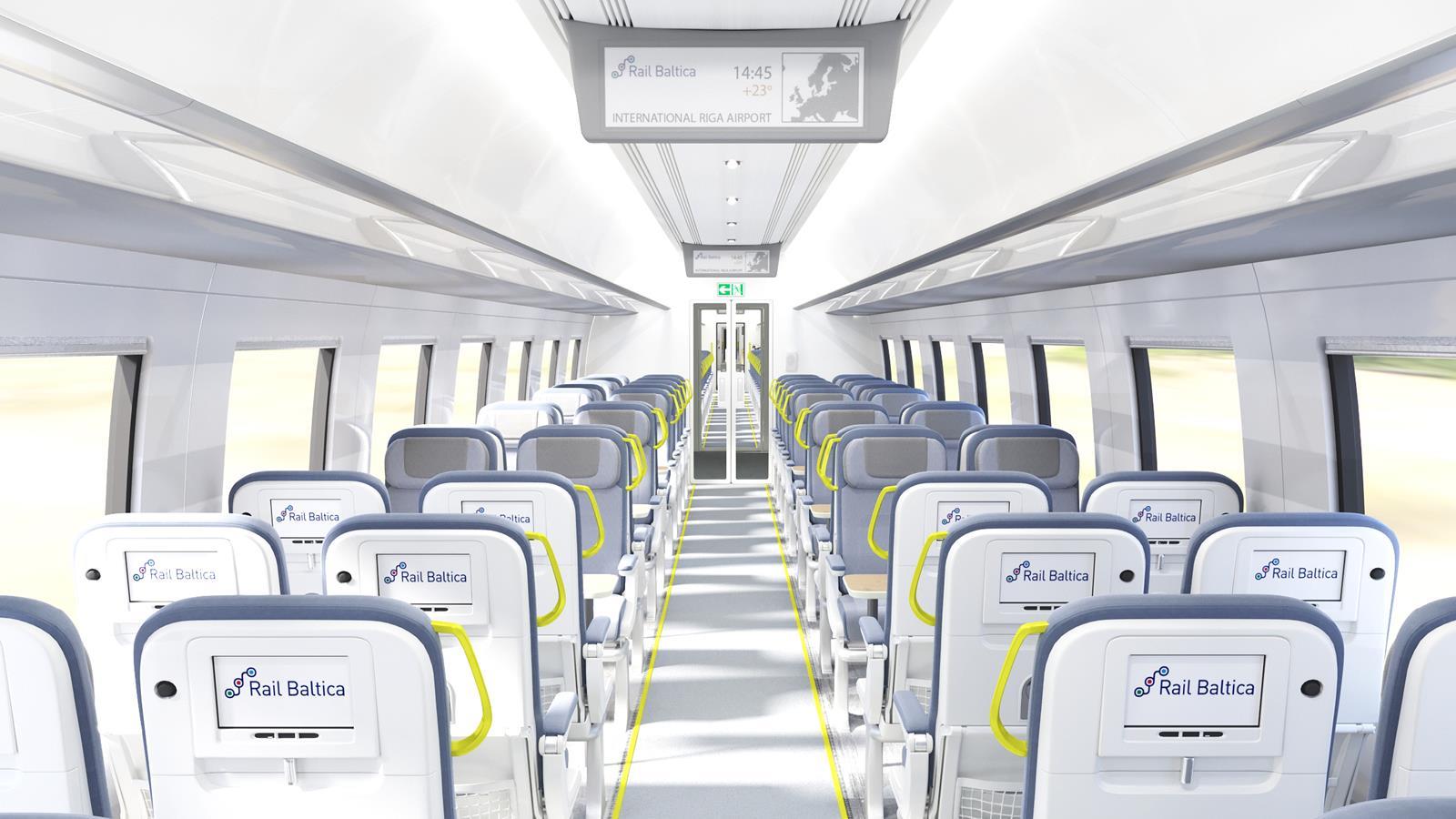
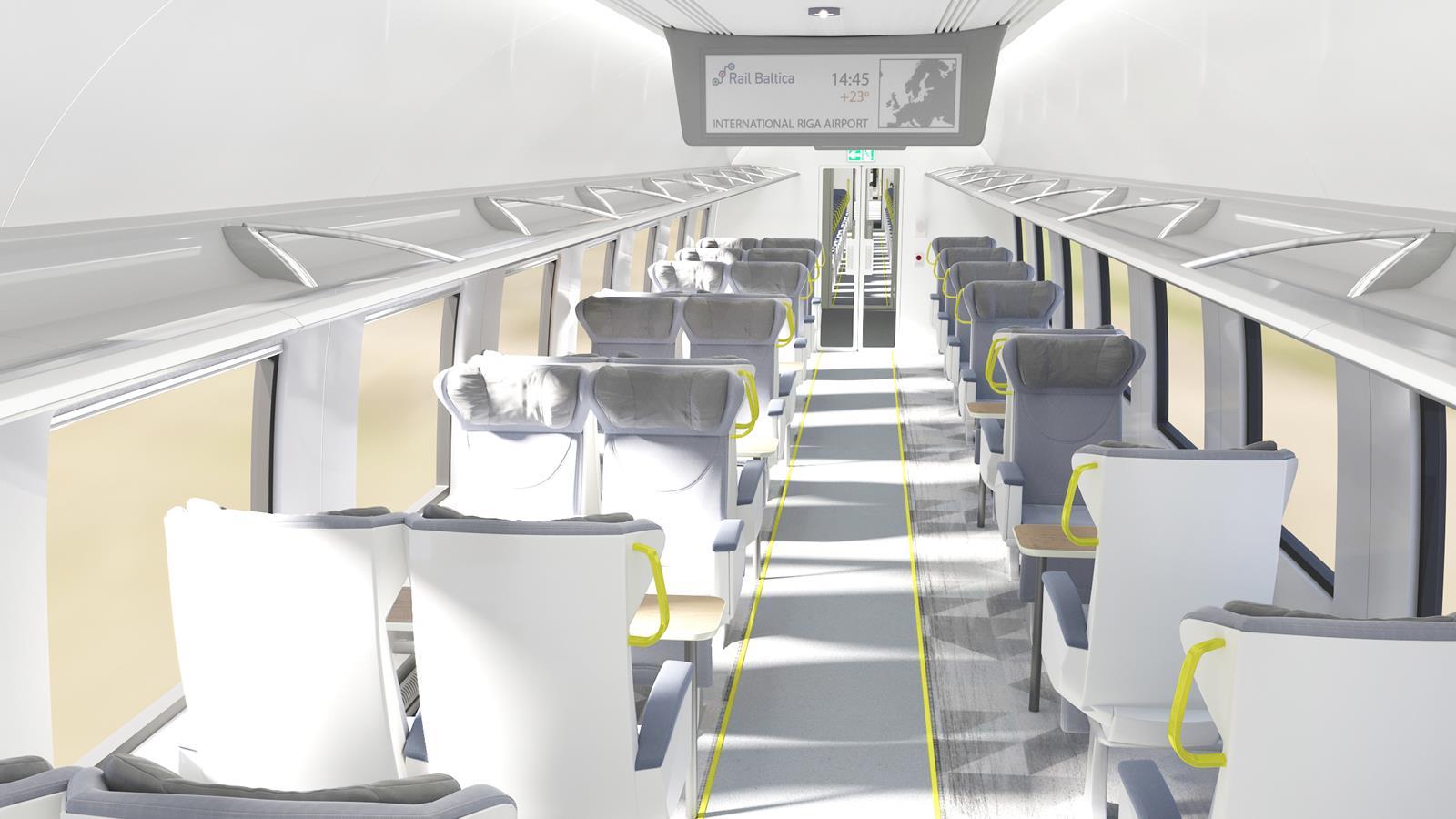
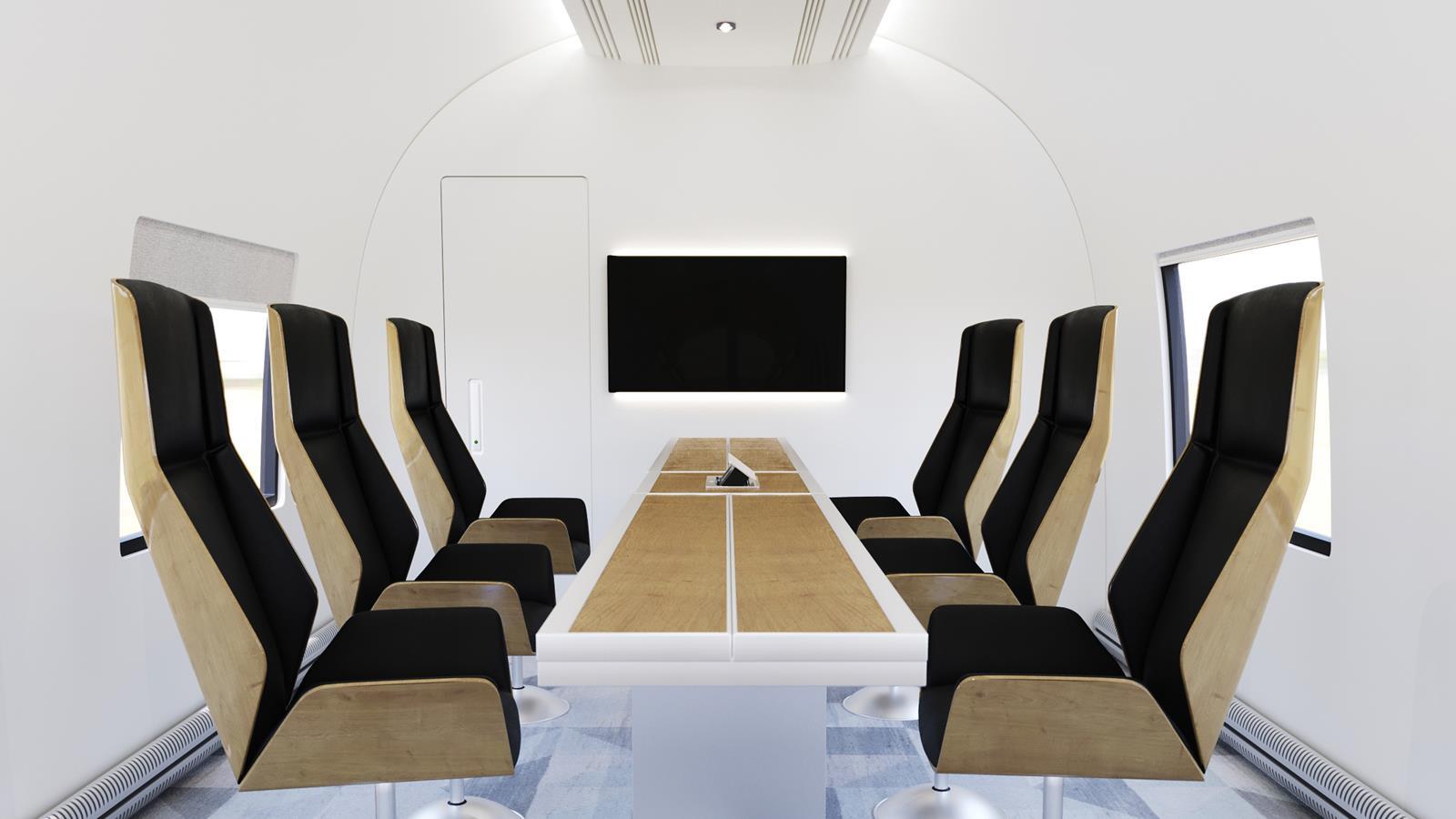
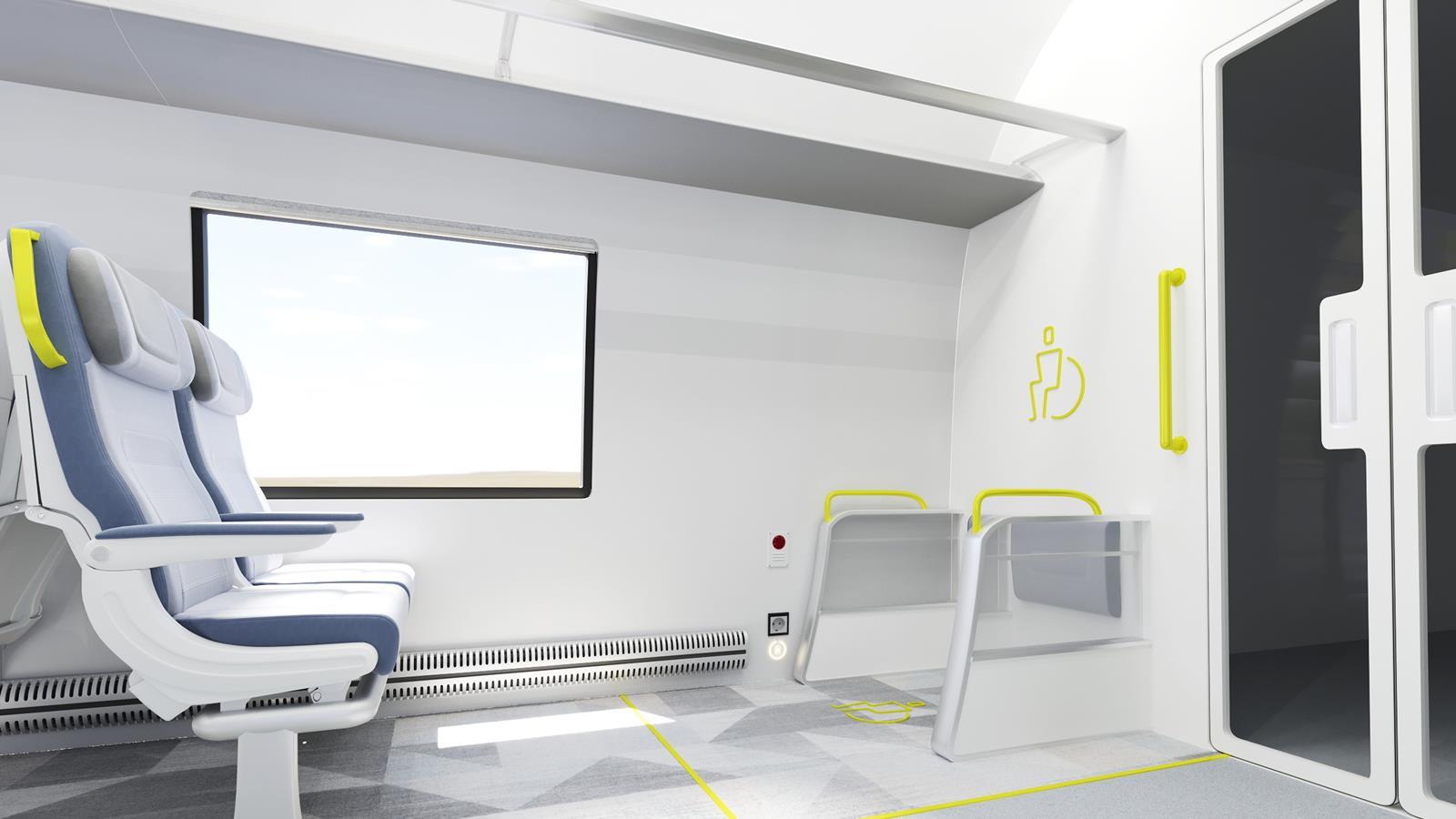

The conceptual eight-car train has approximately 70 seats per coach in standard class,
First class would have a higher level of comfort, with fewer people per coach, more personal space and extra legroom.
An area for business travellers could provide a meeting room with teleconferencing facilities and presentation screen.
There would be wheelchair access and priority seats.
Rail Baltica is being designed for passenger trains to run at up to 249 km/h, and freight trains at 120 km/h.
The conceptual eight-car train has approximately 70 seats per coach in standard class, with wi-fi, USB and charging points and real-time information screens. First class would have a higher level of comfort, with fewer people per coach, more personal space and extra legroom. An area for business travellers could provide a meeting room with teleconferencing facilities and presentation screen. A cafeteria located between the standard and first class area would serving hot drinks and snacks.
There would be wheelchair access and priority seats, with baby changing tables in the toilets. There would be space for pets, bicycles and luggage, with the option for passengers connecting with flights to check-in baggage.
Rail Baltica is being designed for passenger trains to run at up to 249 km/h, and freight trains at 120 km/h.
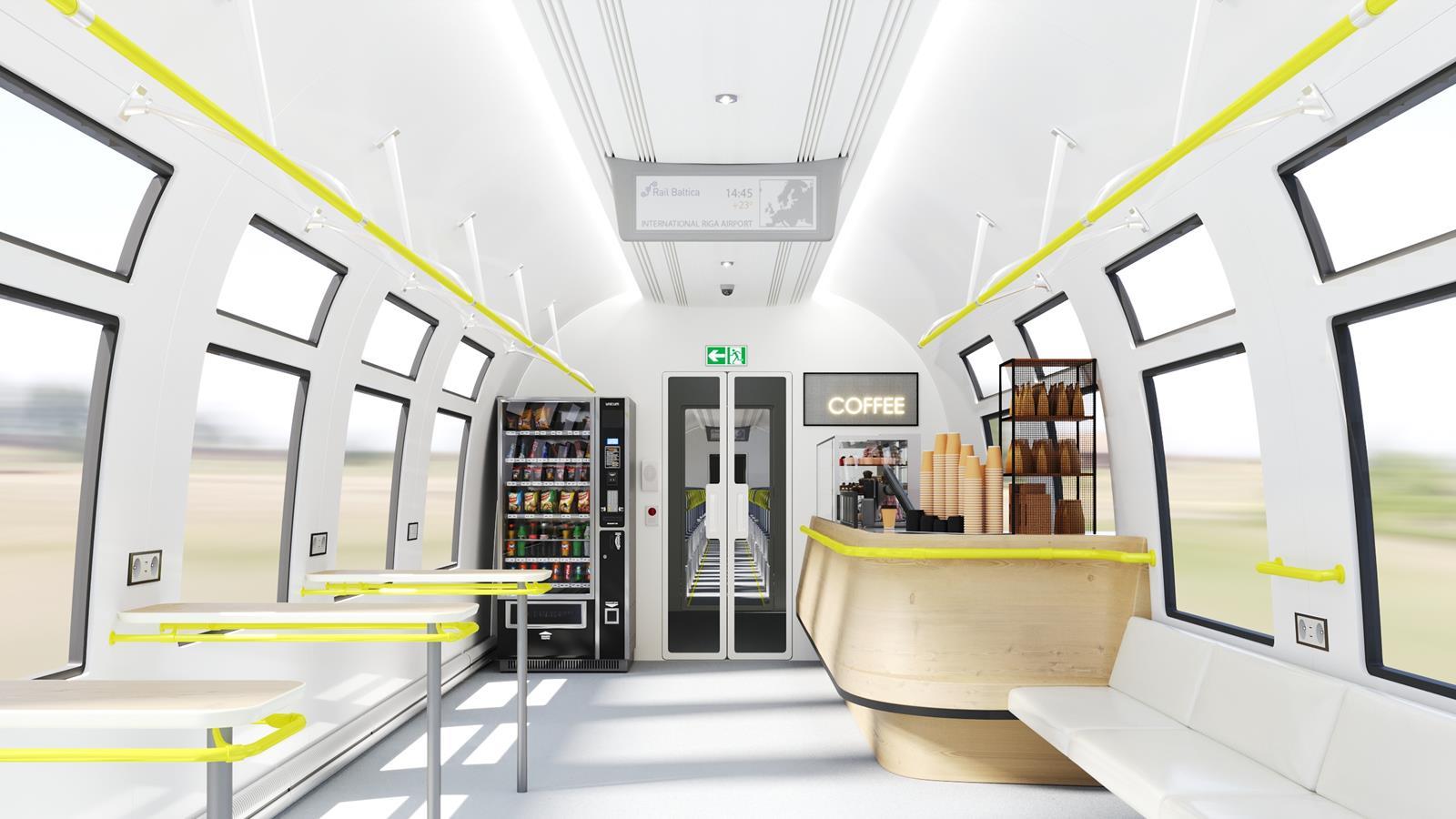

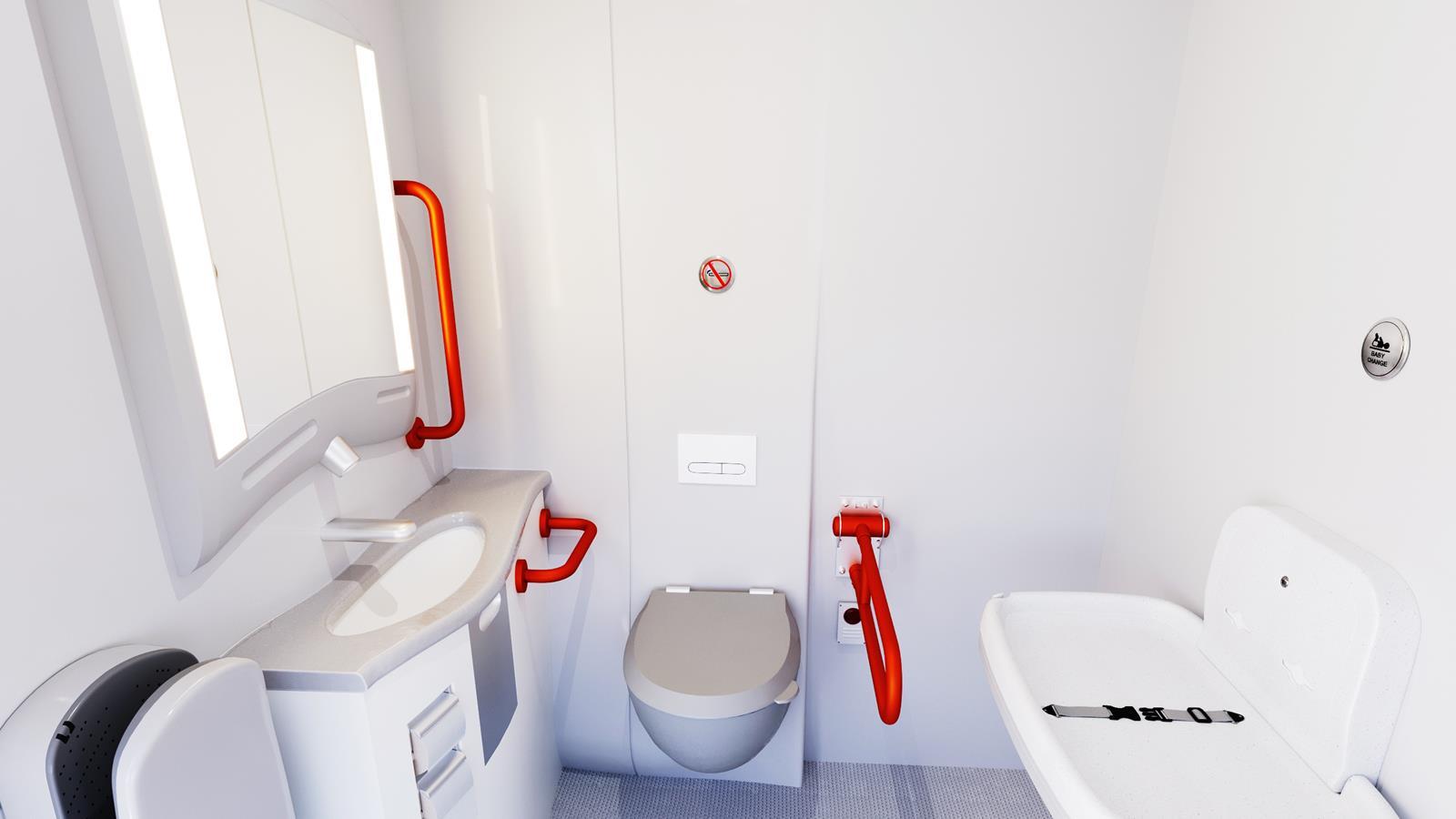
A cafeteria located between the standard and first class area would serving hot drinks and snacks.
There would be space for pets, bicycles and luggage, with the option for passengers connecting with flights to check-in baggage.
There would be baby changing tables in the toilets.

















